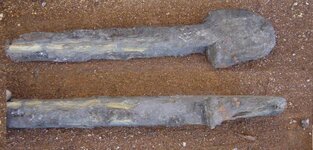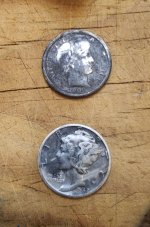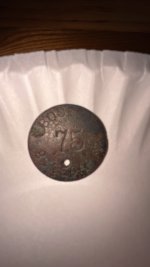CaribbeanDiver
Full Member
- Oct 28, 2004
- 188
- 2
This is from a ship that went down in early 1700.
There have been maybe 20-25 of these.? Found mostly with or near cannon balls.
The photos make it look like it may have some wood, but they are all iron. It is about 10" long.
Any input is appreciated.
There have been maybe 20-25 of these.? Found mostly with or near cannon balls.
The photos make it look like it may have some wood, but they are all iron. It is about 10" long.
Any input is appreciated.







